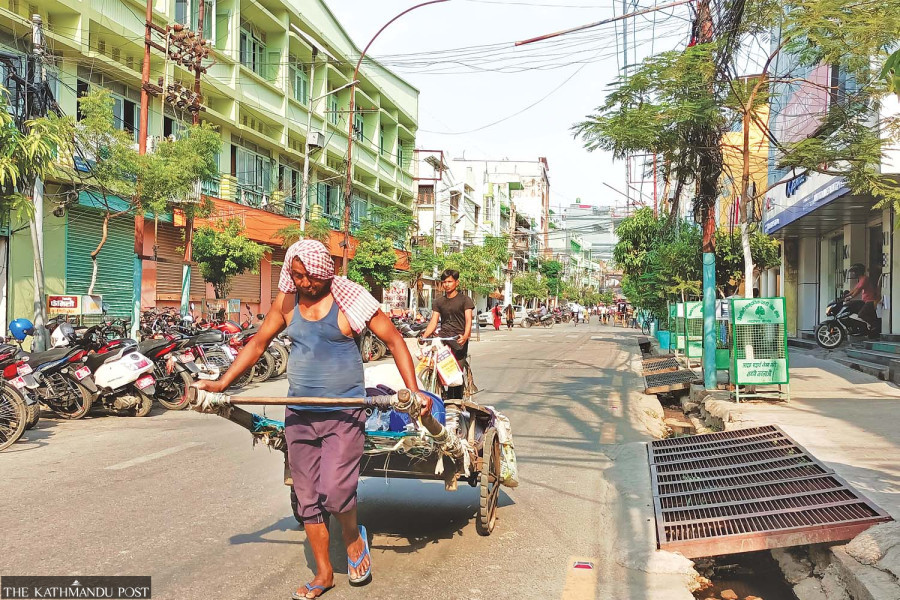Editorial
Feeling the heat
The government must create green building designs to combat heatwaves.
The mercury in the lowlands of Terai-Madhes has recently been hovering around 40 degrees Celsius. On Monday, citizens in Dhangadhi, Nepalgunj, Bhairahawa, Simara and Janakpur faced extreme heat as temperatures soared above 40 degrees. Similarly, Dipayal, Birendranagar, Ghorahi and Biratnagar recorded temperatures exceeding 37 degrees. (People are already dying from unbearable heat in parts of India.) The absence of rain has dampened the citizens’ fervent desire for some respite from the sun. Worryingly, this is just the initial phase of heatwaves, and we must brace ourselves for worse to come.
As global temperatures rise, living with climate extremes, including heatwaves, will be the rule rather than the exception in the coming days. In an article in Nature, scientists have said heatwaves will be more frequent, persistent, and intense in nearly all inhabited regions. An increased occurrence of humid heatwaves is anticipated in South Asia. Cities such as Delhi, Karachi, Chennai, and Dhaka have already shown unprecedented scales of heatwaves in recent years.
Earlier this year, the Earth breached the 1.5 degrees Celsius temperature rise above pre-industrial levels, for more than 12 months—a level “never experienced by human civilisations”. Scientists believe the extraordinary temperature levels reached in the past year could partly be because of the El Niño cycle and human-induced global warming. But there is no doubt that we are staring at a bleak future, considering how little is being done to curb the use of fossil fuels globally.
Apart from the dangerous fact of the Earth getting warmer and heatwaves becoming more frequent, what is distressing is that our global physical infrastructures are not built to withstand the heat. The most effective, albeit expensive, technology to temporarily deal with heat within confined structures is an air-conditioner. But an air-conditioner is still a luxury in much of Nepal considering its operational costs. More than that, an air-conditioner is known to add to the global temperature and is therefore not environment friendly.
What, then, are we to do about the heatwave crisis? The government publishes a circular each year asking people to stay indoors, remain dehydrated and wear cotton outfits. However, there is no way people can stay indoors when they have to go out and work for daily sustenance. That is why the people who work outdoors, in construction sites and agricultural fields, bear the brunt of heatwaves. The government must enforce mandatory breaks of around three hours midday in the summer so that workers, at least those working in the formal sectors, are legally entitled to such breaks.
The government must also help the poor fight heatwaves by providing them with subsidies in the purchase of coolers and fans to ensure equitable access to cooling technology. Moreover, the government must send paramedics, doctors and nurses, especially to the plains hinterlands, to attend to the sick, as heatwaves cause heat stroke, exhaustion, cramps and fainting, among other medical complications. Apart from such short-term responses, it must start working on long-term solutions, including designing green technology-based buildings to combat heatwaves and other climate-related crises.




 19.12°C Kathmandu
19.12°C Kathmandu














